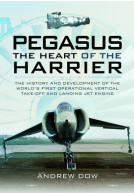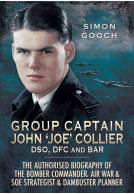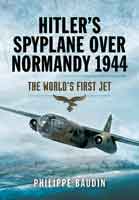From Fury to Phantom (Hardback)
Imprint: Pen & Sword Aviation
Pages: 256
ISBN: 9781844152025
Published: 1st February 2005
Last Released: 1st August 2007
(click here for international delivery rates)
Need a currency converter? Check XE.com for live rates
| Other formats available - Buy the Hardback and get the eBook for free! | Price |
|---|---|
| From Fury to Phantom ePub (2.3 MB) Add to Basket | £6.99 |
Richard 'Dickie' Haine first went solo in a de Havilland Gipsy Moth during August 1935, after only one week of tuition. He joined the RAF shortly afterwards as a Direct Entry Sergeant Pilot and left the service in 1970 as a Group Captain, OBE, DFC. During his long career he flew an extraordinary variety of aircraft types, starting with small biplanes that were designed upon the philosophy gained during World War I and finishing with Britain's V Bomber force and American-designed fighters at the very edge of space. His first posting was with No 25 Squadron flying Hawker Demons and Gloster Gladiators during 1936 until the unit was re-equipped with Bristol Blenheims and undertook a night-fighter role. These were difficult days during which the primitive radar system made it all but impossible to locate incoming enemy aircraft, but the squadron were also sent on several offensive missions over the recently invaded European countries. Haine was lucky to escape when his aircraft was shot down and crash-landed on a small Dutch island after an abortive raid on German occupied Walhaven airfield. After a hazardous journey on foot through the increasingly threatened lowlands he escaped on a RN Frigate. During the Battle of Britain he continued in the night-fighting role flying from Manston in Kent. Now a Commissioned officer, he was given command of No 96 Squadron, flying Boulton Paul Defiants in the night defence of the industrial heartland of England. Then, after a spell as a Staff Officer at Bentley Priory, he took command of No Ò448Ó Squadron who were equipped with the superlative de Havilland Mosquito. During this period the squadron had an enviable score sheet in downing enemy aircraft during many night operations. Haine himself shot down a Ju.88 and a Ju.188. At the end of the War in Europe the author was posted to the Pacific to a new Flying Wing that was to support bombing operations against Japan. These never materialised as the atom bombs ended the war and he was sent to Hong Kong to take over Kai Tak from the Japanese and to get it operational to fly out released prisoners. His post-war flying was heavily involved in the development of jet-powered fighters and sophisticated new weaponry.
There are no reviews for this book. Register or Login now and you can be the first to post a review!















